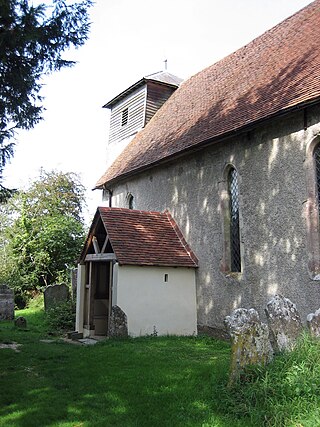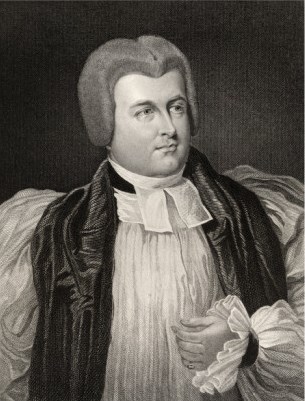Related Research Articles

Duke of Somerset, from the county of Somerset, is a title that has been created five times in the peerage of England. It is particularly associated with two families: the Beauforts, who held the title from the creation of 1448, and the Seymours, from the creation of 1547, in whose name the title is still held. The present dukedom is unique, in that the first holder of the title created it for himself in his capacity of Lord Protector of the Kingdom of England, using a power granted in the will of his nephew King Edward VI.

Charles Seymour, 6th Duke of Somerset, known by the epithet "The Proud Duke", was an English aristocrat and courtier. He rebuilt Petworth House in Sussex, the ancient Percy seat inherited from his wife, in the palatial form which survives today. According to the Encyclopædia Britannica Eleventh Edition, he was a remarkably handsome man, and inordinately fond of taking a conspicuous part in court ceremonial; his vanity, which earned him the sobriquet of "the proud duke", was a byword among his contemporaries and was the subject of numerous anecdotes; Macaulay described him as "a man in whom the pride of birth and rank amounted almost to a disease".

Thomas Gage, 1st Viscount Gage of High Meadow, Gloucestershire and later Firle Place, Sussex, was a British landowner and politician who sat in the House of Commons as a Whig for 33 years between 1717 and 1754.

General Algernon Seymour, 7th Duke of Somerset, styled Earl of Hertford until 1748, of Petworth House in Sussex, was a British Army officer and Whig politician who sat in the House of Commons from 1708 until 1722 when he was raised to the House of Lords as Baron Percy.

Edward Seymour, 1st Earl of Hertford, 1st Baron Beauchamp, KG, of Wulfhall and Totnam Lodge in Great Bedwyn, Wiltshire, of Hatch Beauchamp in Somerset, of Netley Abbey, Hampshire, and of Hertford House, Cannon Row in Westminster, is most noted for incurring the displeasure of Queen Elizabeth I by taking part in more than one clandestine marriage.

Sir John St John, 1st Baronet of Lydiard Tregoze in the English county of Wiltshire, was a Member of Parliament and prominent Royalist during the English Civil War. He was created a baronet on 22 May 1611.

Daniel Lysons (1762–1834) was an English antiquarian and topographer, who published, amongst other works, the four-volume Environs of London (1792–96). He collaborated on several antiquarian works with his younger brother Samuel Lysons (1763–1819).
Sir William Boleyn, KB of Blickling Hall in Norfolk and Hever Castle in Kent, was a wealthy and powerful landowner who served as Sheriff of Kent in 1489 and as Sheriff of Norfolk and Suffolk in 1500. He was the father of Thomas Boleyn, 1st Earl of Wiltshire, whose daughter was Queen Anne Boleyn, the second wife of King Henry VIII.

Up Marden is a small village in the parish of Compton in the Chichester district of West Sussex, England. The former parish was incorporated into the civil parish of Compton in 1933. It is on the South Downs 7 miles (11 km) north-west of Chichester, close to East Marden and North Marden.

Robert James Carr (1774–1841) was an English churchman, Bishop of Chichester in 1824 and Bishop of Worcester in 1831.
Sir Henry Peckham (1615–1673) was an English landowner, lawyer, judge, administrator, and politician who sat in the House of Commons as MP for Chichester in Sussex at various times between 1654 and 1673.
Sir Thomas Fludd, the son of Welsh parents, became a landowner in Kent, where he held several public offices. His youngest son was the scientist Robert Fludd.

John Ivory-Talbot (?1691–1772), of Lacock Abbey, Wiltshire, was an English landowner and politician who sat in the House of Commons between 1715 and 1741.
The Ven. Charles Webber, MA (1762–1848) was Archdeacon of Chichester from 1808 until his death.
Sir Thomas Peckham (1691-1724) was an English landowner who served as High Sheriff of Sussex.
Charles Goodwin (1658–1731) was an English landowner who lived in the historic house of Rowfant in Sussex and served as High Sheriff of Sussex.
John Drew (1734–1808) was an English banker and landowner, who served as High Sheriff of Sussex.
Charles Marsack was an East India Company army officer and landowner who, from seemingly humble origins had made a fortune in India, and according to stories first published in Burke's Landed Gentry in 1894, was reputedly the son of Frederick, Prince of Wales or of King George II by a so-called Comtesse de Marsac. He was said to have been born about 1735-6 but was probably born in 1747-8 and was said to have married in 1767. He was actually the son of Jean Charles Marsac (1708-1751), a servant to one of George II's pages, Joachim Lorentz Sollifoffer, who in his will made generous provision for the widowed Margaret Marsac née Saunders and her child Jean Charles who was his godson. Jean Charles Marsac's father was the son of a migrant from Poitou, also called Charles Marsac, a carpenter, who had come to England before 1704/5. Jean Charles Marsac was usually called Charles Marsac and was apprenticed as a weaver. He died in Kensington in 1751, having married at St Martin in the Fields in 1745/6 one Margaret Saunders who was probably related to Thomas Saunders, standing wardrobe keeper to George I and George II. She married secondly at St George's Chapel, Mayfair, John Holcroft, and died in 1785, her administration being granted to Charles Marsack her 'natural and lawful son'. By her second husband she had a daughter Margaretta Holcroft (1755-1785) who lived with William Roome and had several illegitimate children by him who spread the story that she was the daughter of Margaret, Comtesse de Marsac.
Peckham Williams (1712-1785) was an English landowner who served as Sheriff of Sussex in 1750.
William Peckham (1689–1765) was an English landowner who served as Sheriff of Sussex in 1718.
References
- ↑ ""England Births and Christenings, 1538-1975", database, FamilySearch Thomas Phipps, 1750". FamilySearch . Retrieved 25 January 2022.
- ↑ ""England, Sussex, Parish Registers, 1538-1910," database, FamilySearch citing Burial, Up Marden, Sussex, England, 00424, West Sussex County Record Office, Chichester Thomas Peckham Phipps, 09 Jun 1820". FamilySearch . Retrieved 25 January 2022.